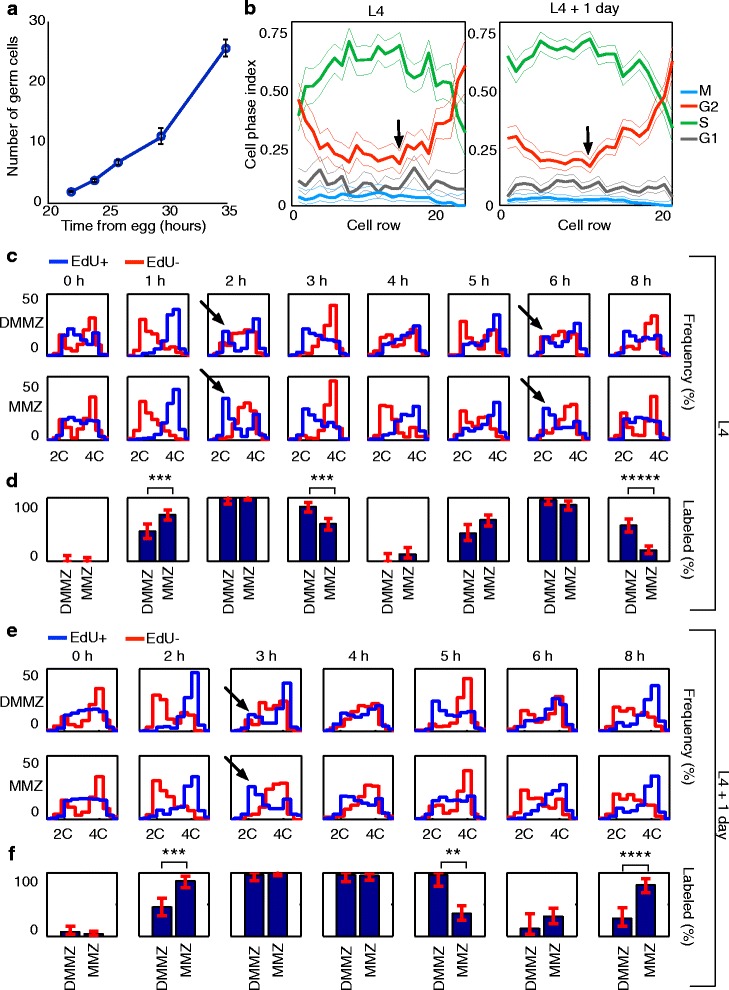Fig. 3.

Experimental analysis of C. elegans germ-cell cycling. a Time course of larval germ-cell proliferation at its onset. A fit assuming exponential growth gave a cell cycle length of 3.4 h for early germ-line development. b–e Spatial cytometry reveals qualitative differences in cell cycle behavior along the distal–proximal axis of the C. elegans germ-line MZ. b Cell cycle phase indices change as a function of distance to the distal end (as measured in cell rows), both at the L4 stage and at L4 + 1 day; in particular, the G2 index is higher distally at the expense of the S-phase index. Cell cycle phase indices were determined by pulse-fixing worms with the S-phase label EdU and quantification of DNA contents. Thin lines show 95 % bootstrap confidence band. Arrows show the position at which the G2 index starts to rise, which was used to define the proximal end of the MMZ. c–f Different progression of EdU-positive and EdU-negative cell populations at L4 (c, d) or L4 + 1 day (e, f). c, e Cell cycle progression after EdU pulse-chase differs between DMMZ (top row) and MMZ (bottom row). DNA content histograms are shown for EdU-positive cells (blue) and EdU-negative cells (red), for a range of chase times (one chase time per column). Overall, DNA content histograms cycle as expected as cells progress through the cycle; the original DNA content histogram is approximately reconstituted by 5–6 h. But crucially, DMMZ and MMZ histograms show statistically significant differences (subset highlighted by arrows; Additional file 2: Tables S2 and S3) that suggest that MMZ cells cycle faster; for example, at L4, the higher incidence of low DNA content, EdU-positive cells at the 2 h chase time in the MMZ suggests that these cells underwent division earlier than in the DMMZ. d, f Independent analysis of EdU pulse-chase data confirms that MMZ cycles faster than DMMZ. The fraction of EdU-labeled mitoses (FLM) in the DMMZ and MMZ is shown for the same chase times as in (c, e). Significant differences, as expected for faster MMZ cycling, are apparent at L4 for the 1 h, 3 h, and 8 h time points (p < 4 × 10–3 with Bonferroni correction; Additional file 2: Table S4) and at L4 + 1 day for the 2 h, 5 h, and 8 h time points (p < 0.02 with Bonferroni correction; Additional file 2: Table S5)
